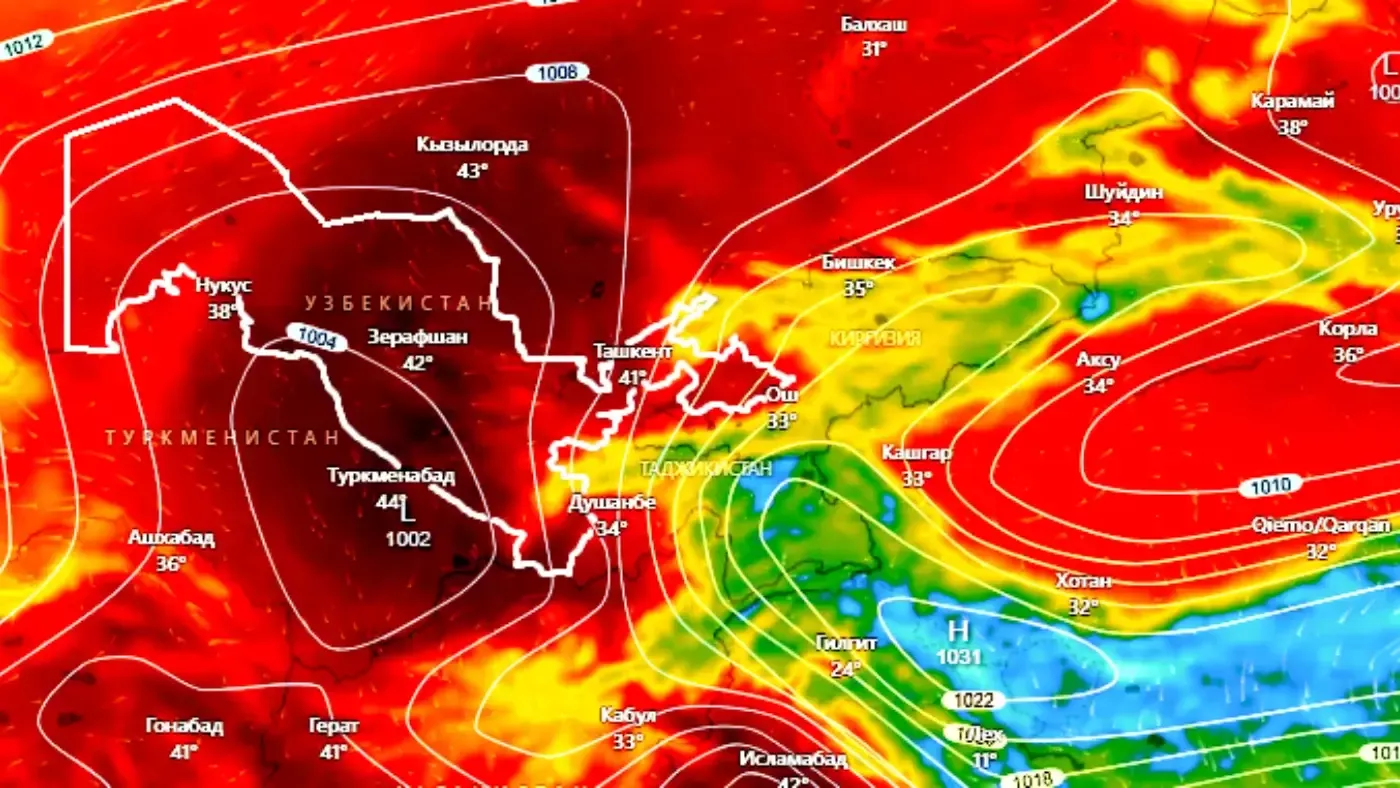
This week, unusual heat for May is being observed in Uzbekistan — in some regions, the temperature has reached up to 45°C, according to Podrobno.uz. This situation is not just a few days of weather: meteorologists and climatologists are noting a rare atmospheric phenomenon called "thermal depression," which is not typical for spring. Previously, it was only observed during the summer months.
Thermal depression is a synoptic process that forms a low-pressure atmospheric zone in a certain area due to the intense heating of the Earth's surface. This phenomenon usually occurs in desert and semi-desert areas, meaning that the heat of the air reaches extremely high levels. As a result, hot and dry air flows in from the south and southwest, which intensifies the heat.
Climatologist Erkin Abdulakhotov emphasizes that such active thermal depression has not been observed in Uzbekistan in May for the last 65 years. It is as if summer has come instead of spring, but in a stronger form.
According to him, this heat poses a serious threat to agriculture. In particular, crops in valley areas — young cotton, vegetables, and melons cannot withstand the heat shock. Therefore, he urgently recommended irrigation. This process also negatively affects the vegetation of fruit trees.
Moreover, during such hot days, the demand for electricity sharply increases. Air conditioners, fans, and refrigerators operate continuously — this is a test for the energy system. Especially during working days, consumption is high.
Temperatures above 40°C are also dangerous for human health. Especially for the elderly, children, and people with chronic illnesses. Doctors are warning about the risks of heat stroke, dehydration, and the exacerbation of cardiovascular diseases.
In the desert areas of Karakalpakstan, Navoi, and Bukhara regions, high temperatures and dryness may lead to dust lifting and dust storms. This will result in a sharp increase in air pollution in these cities.
According to Abdulakhotov, one of the reasons for this anomaly is global warming. Over the last 30 years, the average temperature in Central Asia has increased by more than 1.5°C. Additionally, a stable anticyclone formed in the southeast is blocking cool air flows. The hot air coming from Turkmenistan and Iran has also intensified this process.
According to O'zgidromet, a cold air front is expected to move in from the northwest on May 17-18. This will slightly lower the temperature, but it will still remain above average. During the transition period, there is a possibility of strong winds and dust storms.
This heat in May is not a temporary weather phenomenon, but a result of global climate change and local atmospheric processes. This requires not only caution but also a strategic approach to ecology, water resources, and sustainable agriculture.